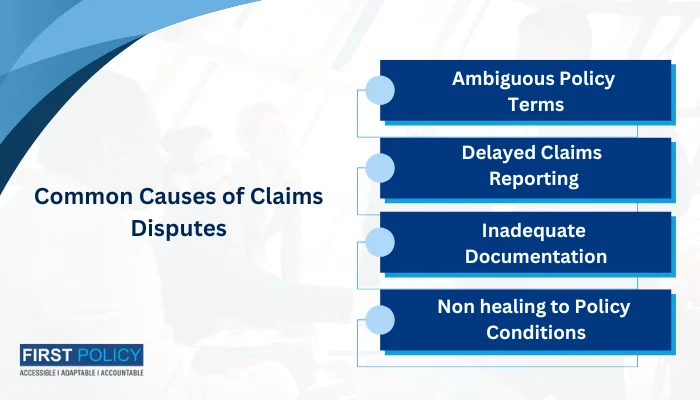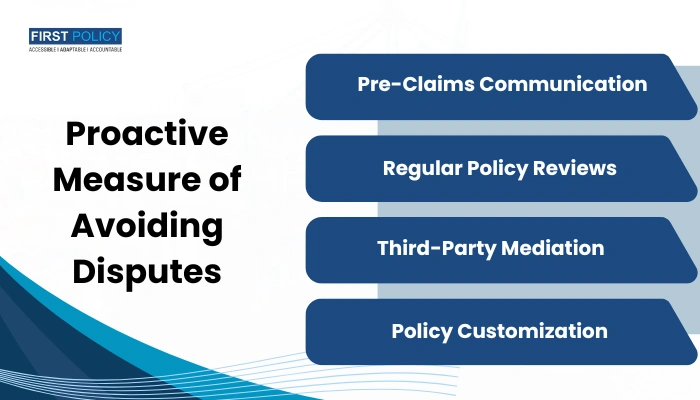
The Science of Claims Management: Tips for Businesses to Avoid Disputes
Businesses face many complex risks, and claims management is a key insurance process. Claim management leads to financial security, shields an organization’s reputation, and limits operations’ disruption. But that doesn’t mean claims can’t go wrong — disputes, delays, and financial loss are real possibilities. In this blog, we uncover the science of claims management in insurance and provide businesses with actionable tips on how to streamline this process and avoid conflicts.
What the Individual Needs to know about Claims Management?
The systematic exercise of managing claims filed under insurance policies is claim management. One is verification of claims, calculation of losses, and swift settlement. This process is as important as it directly affects the financial health of an organization and the extent of trust of its stakeholder. For businesses having an effective claims management will reduce risks and keep them operating smoothly.
Businesses often face different forms of claims from each other, such as property damage, liability issues, or the rise of related employee incidents. To assess these claims you’ll need a solid grasp of corporate risk management strategy, and insurance products like Liability insurance coverage and Professional indemnity insurance.
Corporate Risk Management: Role
Corporate risk management is concerned with identifying, assessing and minimizing potential claims that arise from any other source that does not fit in the previously described mantle. A proactive and comprehensive Risk Management approach guarantees that businesses are always ready to deal with claims in an efficient manner and minimise the possibility of disputes.
Key Strategies for Corporate Risk Management
- Risk Identification: Spot potential risks specific to your industry, your operation or geography.
- Insurance Portfolio Review: Review regularly your insurance policies, for example, your liability insurance coverage, and your professional indemnity insurance, to keep safe.
- Compliance and Training: Provide employees with safety protocol training, legal compliance, and how to report a claim.
- Documentation and Record keeping: Keep records of what happens, of all the contracts and all the communications to hold yourself in good stead during claims processing.
Common Causes of Claims Disputes

Miscommunication, lack of documentation and the lack of clarity around policy terms are some of the causes of disputes. Below are some common causes of disputes and how businesses can address them:
1. Ambiguous Policy Terms
Disputes have their roots in the misinterpretation of insurance policies. When it comes down to it, businesses need to seek clarity on what liability insurance coverage and other policies they have, by talking to the insurance providers.
Tip: Also, have a legal expert review your insurance contracts to determine what’s in, what’s out, and what the limits are.
2. Delayed Claims Reporting
If incidents are not reported quickly it can prevent claims being paid and even worse a claim being denied. Smooth claim settlements are only possible if the reporting is timely.
Tip: Immediately after an incident, the immediate internal process of reporting claims must be set clearly.
3. Inadequate Documentation
Insufficient, or incorrect, documentation can weaken your claim. It gives you the advantage of more detailed evidence and also promotes quicker resolutions of your case.
Tip: Make sure to record any and all communication, incident reports, and evidence with respect to claims.
4. Non healing to Policy Conditions
Claim rejection is likely if you fail to meet the policy conditions, for example maintenance or notice requirements.
Tip: Make sure your business sticks to the conditions of terms that your insurance policies mention.
Effective Claims Management Best Practices
Claims management science in insurance is all about careful planning, open and proactive communication and technology. Below are some best practices to enhance your claims management process:
1. Create a Maps Framework
Build a structured framework for things to do when a claim happens. Also necessary will be its reporting protocols, its documentation requirements, and its escalation processes.
Action Point: Designate a specialized claims manager or team to follow the process and fulfil compliance requirements.
2. Leverage Technology
Today’s claims management systems are automated, have real time tracking and analytics, which streamline the process. Technology can help reduce errors, and increase transparency.
Action Point: Buy claims management software that interacts with your risk management systems.
3. There were engagements of Insurance Brokers and Legal experts
An insurance broker and legal advisor is invaluable for deciding on policy terms, settling the matter and not falling in a case.
Action Point: Also, keep in constant communication with your legal team and insurance providers to keep up with policy and legal requirements.
4. Train Employees
Training employees on reporting claims, risk management and compliance guarantees that your team can act in the event of an incident, quickly and correctly.
Action Point: Invite your staff to periodic workshops of insurance and risk management.
5. Review Claims Trends by Monitoring
By analyzing past claims data, we can understand the patterns, and understand how were able to improve it. This data can be used by businesses to fine tune their corporate risk management strategies.
Action Point: Regularly audit claims data to update risk management policies.
Importance of Liability Insurance Coverage and Professional Indemnity Insurance
Liability insurance coverage and professional indemnity insurance are two key polices for businesses. Here’s how they help mitigate risks:
Liability Insurance Coverage
This policy helps business owners avoid legal and financial liability in case third party claims property damage, bodily injury or negligence.
Benefits:
- Bears the legal fees and settlement costs.
- Works as a protection from reputational damage.
- Makes sure to keep contractual obligations.
Tip: Adjust your liability insurance to the kind of business you operate and to the highest levels of risk your work can present.
Insurance for Professional Indemnity
The policy is of paramount importance to businesses offering professional services or advice. It protects from charges of negligence, careless mistakes or even omission.
Benefits:
- It covers legal expenses of defense / compensation from payouts.
- It protects the business’s reputation.
- Guaranties continuity in case of litigation
Tip: Check that your professional indemnity insurance covers all services your business offers, and all emerging risks.
Proactive Measure of Avoiding Disputes

A proactive approach and transparency to claims management can reduce disputes. Here are additional tips to avoid conflicts:
Pre-Claims Communication:
Between the moment something happens and when you need to communicate with insurers, you need to clarify the process and the expectations.
Regular Policy Reviews:
Periodically reassess your policies, in the event your business operations change, or regulators require different terms in your policies.
Third-Party Mediation:
Just in case of conflict resolve the disputes mutually with third party mediators.
Policy Customization:
These policies are customized to meet the business needs and risks, so you work closely with your insurer.
Conclusion
Insurance claims management is both an art and a science. Helping businesses manage the intricacies of corporate risk and protecting them by availing of the right insurance policy—like liability insurance coverage, professional indemnity insurance —businesses can employ suitable proactive strategies that help streamline the process for claims made and averting disputes altogether.
Apart from maintaining financial sustainability, a well structured claims management approach will earn the trust of stakeholders and long term survival of the organization itself. Remember to prepare, increasing your ability to handle claims quickly and to safeguard your business against unknown challenges.


